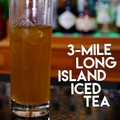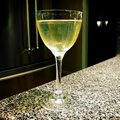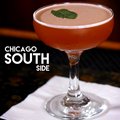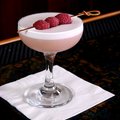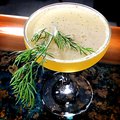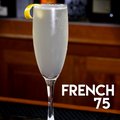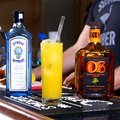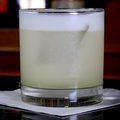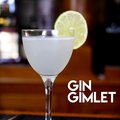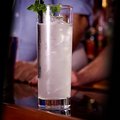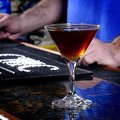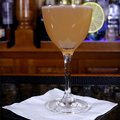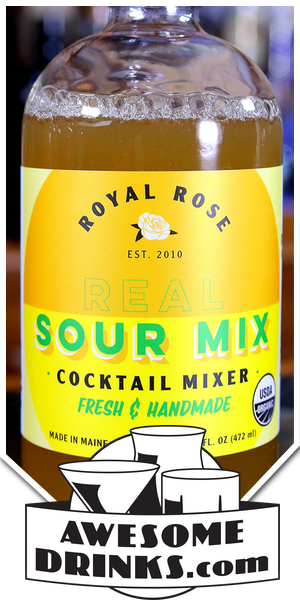Returned 19 result(s) for "London Dry Gin"; page 1 of 2.
Notes:
Drawing potency of spirits combined, with a bit more mild sweetness.
Contains:
Filed In:
The concept of the 50/50 was to go into the opposite direction of a "dry martini", which is to use less dry vermouth. So, to make your martini less dry you had more dry vermouth to counter your dry gin. Yet, this still isn't sweet.
Notes:
Vermouth forward blast of flavor, very spirit forward and "boozy."
Contains:
Filed In:
Not to be confused with the single-word form of the “Southside”, the Chicago South Side is a similar variation that brings Angostura into the mix. Unlike the Southside, however, this cocktail calls for lime juice over lemon juice and London Dry Gin over American Gin.
Notes:
Lovely aromatic flavor of trade spices, gin botanicals and acidity. Just a great drink.
This cocktail is also documented in the 1931 publication Old Waldorf Bar Days by Albert Stevens Crockett (page 127). In this publication, the cocktail was designed as a rum-based recipe with a bit of grenadine.
Notes:
Raspberry sweetness mingled with floral juniper with a light dry citrus mid-palate that finishes sweet and silky with raspberries and gin.
Filed In:
Carl Brown's herbal creation which is a variation on the traditional gin gimlet, we make it with real sour not lime concentrate.
Notes:
Herbal dill, mild sour and floral gin components mingled together in a symphony of flavor
Some dedicated cocktail historians will tell you it was originally made with cognac over gin, but that’s still highly contested. Initially created at the New York Bar in Paris, the alcohol kick is like being shelled by a French 75mm field gun and thus you have “The French 75.”
Notes:
Citrus and sparkling wine beginning into a slight off-dry floral mid-palate finishing with a lingering sweet malty citrus.
This drink does not have a formal history, as a matter of fact, we don't know where it came from (it was a fan submission) but it was tasty and worthy of our database.
Notes:
A juicy flavorful citrus against a subtle gin that's easy to taste and a great pool side beverage. The gin does hide pretty well however.
Contains:
Filed In:
In the 1700s, high doses of quinine were diluted with water to prevent malaria, but was still extremely bitter and hard for people to drink. To make this medicated solution more palatable they added lime, sugar and gin and the early Gin & Tonic was born.
Notes:
Light and refreshing juniper notes with a creeping tonic bite that finishes clean.
Contains:
Filed In:
You can create a “Fix” with any core spirit, as documented on page 135 of How To Mix Drinks by Jerry Thomas. Most accurately, a “fix” is typically served shaken with ice and served over ice, while a sour is shaken with ice but served in a chilled glass without ice.
Notes:
Tastes like alcoholic lemonade
Contains:
Filed In:
The original Gin Fizz recipe was published in 1862 by Jerry Thomas, The Bartender’s Guide: How To Mix Drinks. Similar to that of a Gin Fix but with less ice and more fizz (carbonation).
Notes:
Smooth and silky lemon flavor with muted notes of juniper and a dry finish
Filed In:
This cocktail design was utilized in the mid-1800s as a medical solution. There is evidence of these ingredients being used by the British Royal Navy as a solution to scurvy dating to around 1857.
Notes:
Simple taste of gin and lime with more tart than sour.
Contains:
Filed In:
Designed by Audrey Saunders for Pegu Club as a way to help get vodka drinkers into a gin cocktail; think moscow mule but more flavor (and slightly sweeter)
Notes:
Minty sweetness with a hint of backend ginger flavor
One historical theory behind the Martini is that it was all born out of a modified Martinez cocktail in California during the 1800s gold rush. A variation on this theory involves a miner on their way to Martinez California requesting a drink and the Martini was born.
Notes:
Potent gin botanical attack, fortified wine and an off-dry finish
Contains:
Filed In:
This cocktail was created by Ada Coleman, head bartender at the American Bar in The Savoy, London in 1925. Ada was one of the first influential women bartenders and one of two that held position of Head Bartender at the Savoy.
Notes:
A smooth sweetness, brown sugar that moves into Eucalypus, citrus with forward-vermouth finish. Very manhattan like in flavor design.
A cocktail design by Jennifer Schommer, created to riff-off the Dorchester cocktail, but in our home city of Manchester, NH.
Notes:
Sweet and tart grapefruit, zesty citrus and lingering juniper notes; finishes dry and tart.
Contains:
Filed In:
